Steel Products

S232 lifts EU HR price over US, Asian HR still well behind
Written by David Schollaert
April 24, 2025
Domestic hot-rolled (HR) coil prices were flat this week after dropping for four straight weeks. Most offshore markets bucked the trend and gained ground.
Tariff fears have slowed the US market, a trend further stressed since “Liberation Day.” Stateside prices have slipped in response, and spot buyers stepped back. And little change was seen even after the 90-day pause on harsher “reciprocal” tariffs was announced in early April.
Section 232 came back on March 12, and since then, the price gap between offshore and US hot band has tightened. Before that, allies like Japan and the EU weren’t facing the 25% tariff. Things have shifted since (see Figure 1).
By the numbers
This week, SMU’s average domestic HR price was $895 per short ton (st), unchanged vs. the previous week.
The result: Domestic HR is now theoretically on average 5.9% more expensive than imported material, down from 6.7% last week.
The gap is exclusively impacted by the wide delta over Asian HR. Because both German and Italian product are now at a premium to US HR on a landed basis. This is a shift from just five weeks ago, when stateside hot band was 25.5% more expensive than imports. That gap narrowed immediately after S232 took effect.
In dollar-per-ton terms, US HR is now, on average, $53/st more expensive than offshore product. That’s roughly $8/st lower than the previous week.
The charts below compare HR prices in the US, Germany, Italy, and Asia. The left side highlights prices over the last two years. The right side zooms in to show more recent trends.
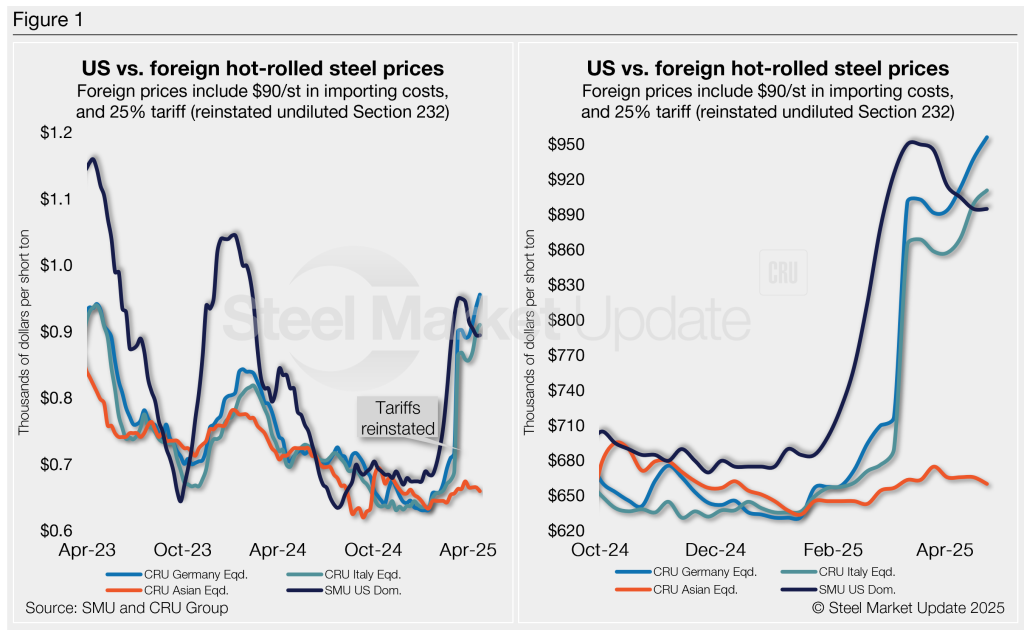
Methodology
SMU calculates the theoretical spread between domestic (FOB mill) and foreign (delivered to US ports) HR coil prices. We do this by comparing our weekly US HR assessment to CRU’s weekly HR indices for Germany, Italy, and East and Southeast Asian ports. This calculation is purely theoretical. Actual import costs can vary significantly and affect the true market spread.
To estimate the CIF price at US ports, we add a $90/st charge to all foreign prices to account for freight, handling, and trader margins, along with the 25% blanket tariff. This $90/st figure serves as a general benchmark — buyers should adjust it based on their specific shipping and handling expenses.
If you import steel and have insights on these costs, we’d love to hear from you. Contact the author at david@steelmarketupdate.com.
Asian HRC (East and Southeast Asian ports)
As of Wednesday, April 23, the CRU Asian HRC price was $456/st, down $5/st vs. the week prior. Adding a 25% tariff and $90/st in estimated import costs, the delivered price of Asian HRC to the US is ~$660/st. As noted above, the latest SMU US HR price is $895/st on average.
The result: Prices for US-produced HR are theoretically $235/st higher than steel imported from Asia – $6/st higher week over week (w/w). The premium remains not far from recent highs seen in 2023 when stateside tags were ~$300 /st more expensive than Asian products.
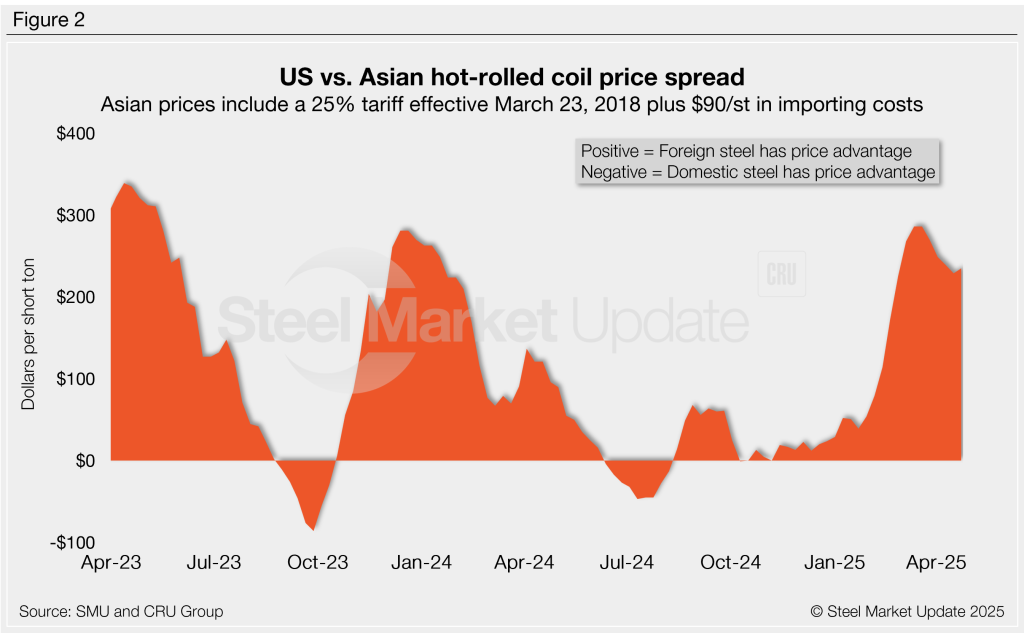
Italian HRC
Italian HR prices rose $9/st this week to $657/st, and up $43/st over the past three weeks, according to CRU. After reintroducing the 25% tariff and $90/st in estimated import costs, the delivered price of Italian HR is, in theory, $911/st.
That means domestic HR coil is theoretically $16/st cheaper than imports from Italy. That’s down $11/st w/w but a $51/st turn in just two weeks. It also represents a $250/st swing before S232 was reinstated. Without the 25% tariff, US prices were, in theory, $234/st above Italian imports.
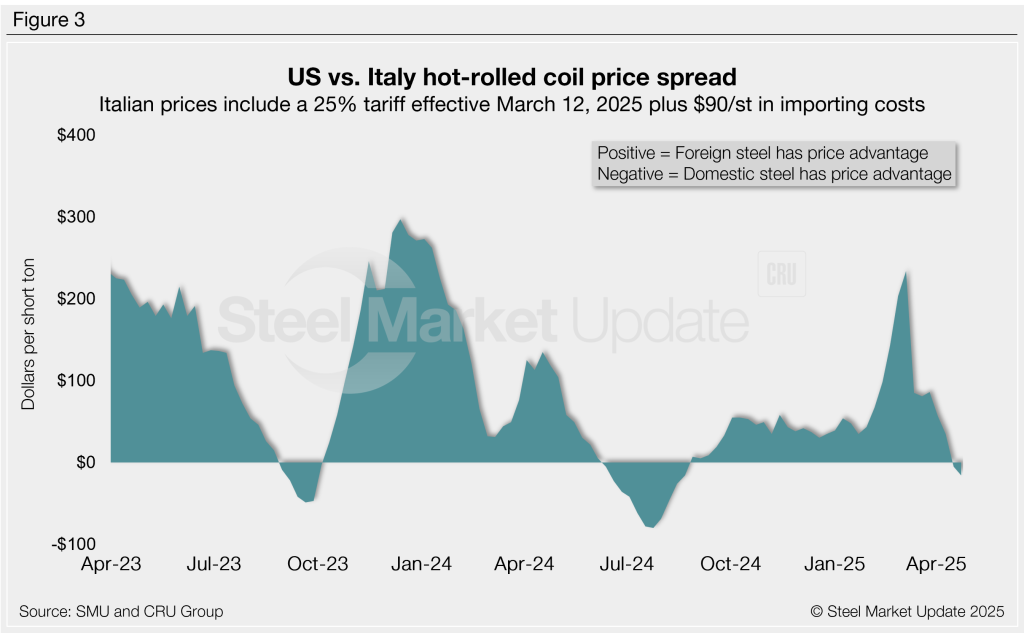
German HRC
CRU’s German HR price was up $14/st to $693/st this week. After adding a 25% tariff and $90/st in import costs, the delivered price of German HR coil is, in theory, $956/st.
The result: Domestic HR is theoretically now $61/st cheaper than HR imported from Germany, a $82/st swing vs. three weeks ago when stateside product was $21/st more expensive.
US hot band held a $207/st premium over German HR little more than a month ago – which had represented the widest margin in 14 months.
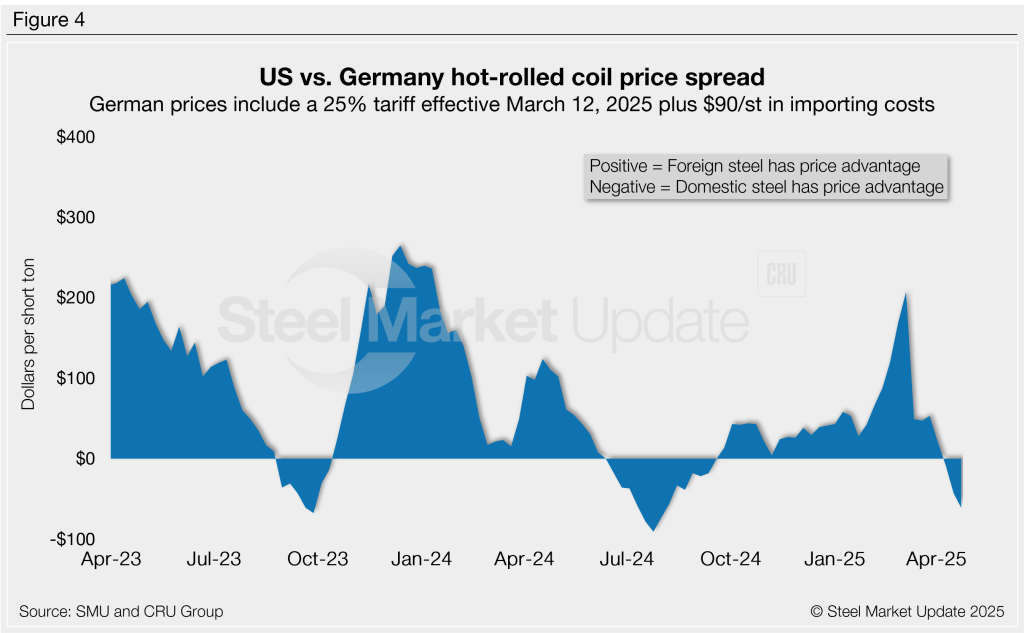
Editor’s note
Freight is important when deciding whether to import foreign steel or buy from a domestic mill. Domestic prices are referenced as FOB the producing mill. Foreign prices are CIF, the port (Houston, NOLA, Savannah, Los Angeles, Camden, etc.). Inland freight, from either a domestic mill or from the port, can dramatically impact the competitiveness of both domestic and foreign steel. It’s also important to factor in lead times. In most markets, domestic steel will deliver more quickly than foreign steel. Effective March 12, 2025, undiluted Section 232 tariffs were reinstated on steel. All steel imports and many derivative products now face a 25% tariff. Therefore, the German and Italian price comparisons in this analysis now include a 25% tariff. We do not include any antidumping (AD) or countervailing duties (CVD) in this analysis.

David Schollaert
Read more from David SchollaertLatest in Steel Products

SMU Steel Demand Index dips into contraction
SMU’s Steel Demand Index has moved into contraction, according to late April indicators. The slowdown comes in response to growing tariff uncertainty after the index reached a four-year high in late February.

Nucor selects Fives Group for new galv line at CSI
Nucor Corp. has tapped Fives Group as its partner in designing and manufacturing the new continuous galvanizing line being added at its California Steel Industries (CSI) joint venture in Fontana, Calif.
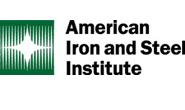
AISI: Raw steel production levels off near six-month high
The volume of raw steel produced by US mills remained relatively flat last week, maintaining the rebound seen one week prior, according to the American Iron and Steel Institute (AISI). Previously at the second-highest rate of the year, production continues to hold at one the strongest levels recorded over the last six months.

Nucor keeps HRC price unchanged
Nucor has kept its weekly hot-rolled (HR) coil price flat this week, after a marginal cut the previous week.
